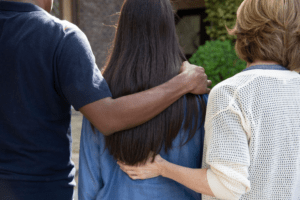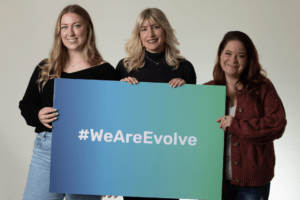We have a problem in the United States: homelessness.
It’s a problem that affects everyone. From small towns to big cities, from federal to state to local governments, from our progressive coastal cities to our more traditional rural interior, homelessness reaches every corner of our country.
Every November, The Coalition for Homeless Youth, The National Coalition for the Homeless, The National Alliance to End Homelessness, and many other public and private organizations unite to raise awareness about homelessness in general, and youth homelessness in particular.
This post, in order to aid the effort and raise awareness about youth homelessness, will offer basic information about homelessness collected from The National Child Traumatic Stress Network (NCTRS), The National Runaway Safeline (NRS), and The Department of Housing and Urban Development (HUD). After we present the statistics, we’ll give you a list of resources and ideas for how you can do your part to help end youth homelessness.
Homelessness: Official Statistics
Here are the key figures:
- At least 2.5 million young people experience homelessness each year.
- Between 1 million and 1.7 million young people have either run away from or been asked to leave their homes.
- Over 500,000 young people each year are homeless for over a week
In their December 2018 Annual Homeless Assessment Report to Congress, HUD presented a Point-In-Time (PIT) analysis, which estimated the number of homeless people on one specific night in 2018, in order to create a data-based estimate of the number of homeless people in the United States.
On a single night in January 2018, they found:
- 552,830 people in the U.S. were homeless.
- 111, 592 were children or adolescents
- 100,433 children or adolescents slept in a shelter.
- 11,159 of children or adolescents slept in an unknown location.
- 56,342 families with kids were homeless.
- 180,413 total people in families with kids were homeless
- 108,249 of these were kids
- 47,755 young adults (18-24) were homeless
- 4,093 were children or adolescents without and adult or parent
- 2,014 slept in a shelter
- 2,079 of them were unsheltered.
- 111, 592 were children or adolescents
Those are the official numbers: on a single night in midwinter, more than half a million people were homeless, including over fifty-five thousand families with kids. More than four thousand children under the age of eighteen were homeless and without an adult, parent, or caregiver. About half of those unaccompanied kids spent the night in a shelter, and we have no information about where the other half spent that night.
How Kids and Teens Become Homeless
There’s a common misconception in our society that the majority of homeless kids and teens become homeless for economic reasons. Most people think homeless teens and youth were born into or grew up in families living at or below the poverty level, and they become homeless when their families encounter additional hardship and lose or are unable to afford housing.
That’s false.
According to the National Coalition for the Homeless, the three primary reasons teens become homeless are, in order of frequency:
- Family Issues. Many teens or youth leave home and experience homelessness because their homes are unhealthy and/or unsafe. They may leave home because:
- They experience physical, emotional, or sexual abuse.
- A family member has an alcohol or substance use disorder or a mental illness.
- They may have emotional, physical, or psychological issues their families can’t handle.
Note: As many teens come from middle or upper middle-class families as come from families of lower socioeconomic status.
- Discharge from Government or Foster Care. When they leave foster care, teens and youth often lack the knowledge or resources to find a safe and appropriate place to live. Many are without money, jobs, or any kind of support – family or otherwise.
- Financial Problems. Families may become homeless because of loss of employment, when a parent becomes involved with the criminal justice system or when rent increases or when facing an unforeseen economic hardship: one car repair or one doctor’s bill can make the difference for a family living paycheck to paycheck. Children in homeless families may start with their families but get separated and end up alone.
How You Can Help
There is no single answer to the problem of youth homelessness. It will take the coordinated effort of local, state, and federal entities to make progress toward a permanent solution, and the time and energy of regular citizens will play a critical role.
Private and public organizations to end homelessness advocate citizens to support policies that allocate significant funding to the following priority areas:
- Rental and Housing Subsidies
- Eviction Prevention Programs
- Proactive screening of vulnerable populations, including:
- Veterans
- Youth in foster care
- People leaving public mental health facilities
- People released from incarceration
- Proactive screening for youth:
- In dangerous/abusive home environments
- With substance use or alcohol/mental health disorders
- Involved in the criminal justice system or juvenile detention
As one homeless shelter volunteer wrote, “Homelessness knows no zip code.” This means homelessness is a problem that can affect us all. It’s not a question or rich or poor, young or old, urban or rural, or conservative or liberal: homelessness is everyone’s problem. Therefore, we all have a compelling interest in ending homelessness. We can start by volunteering in a homeless shelter or donating money, clothes, or food to the appropriate non-profit entity – and we can follow that up by advocating for public policies that address homelessness, beginning with the critical areas mentioned above.






























































